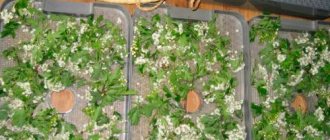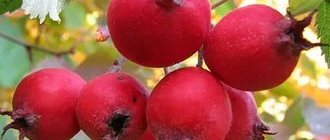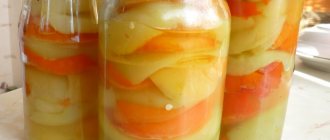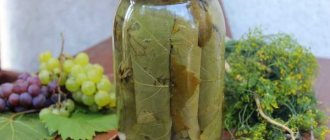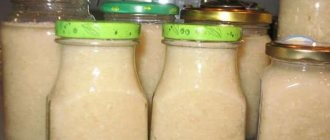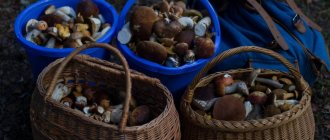Hawthorn is a useful medicinal plant, widely used as an effective folk remedy for a variety of diseases. Its fruits not only have medicinal properties, but are also used for culinary purposes . To get the maximum benefit from it, you need to strictly follow the recommendations on how to collect and store. In this article we will look at ways to harvest and store hawthorn for the winter at home.
Hawthorn eliminates digestive problems, cleanses the blood, improves heart function, and relieves insomnia. It is an excellent remedy for the prevention and treatment of neuroses, cardiovascular diseases, arrhythmia, tachycardia, atherosclerosis and other ailments.
When can you collect hawthorn fruits, flowers and leaves for future use?
All parts of hawthorn are useful in one way or another:
- Leaves
- Berries
- Flowers
- Bark
The fruits are used for food and medicinal purposes, the remaining parts are used only for medicinal purposes. The collection of hawthorn fruits in central Russia is carried out during their ripening period. Hawthorn begins to ripen in the fall, around the end of September. Fully ripe, it has the highest concentration of vitamins. It is important to do this before the first frost, otherwise the cold-damaged berries will be unsuitable for further storage . When overripe, they begin to become moldy. It is undesirable to collect hawthorn from bushes located near busy roads or near an industrial zone - they may contain a high content of harmful substances.
Hawthorn bush with fruits
The best weather for collecting is dry and calm, during the daytime, when the dew has dried. Ripe berries are an attractive treat for birds, so you need to collect them quickly. Maturity is determined by the color of the fruit - it should be bright red . The berries are not picked individually, but cut in clusters, after which they are carefully placed in baskets or trays. Damaged, unripe, rotten, and overripe fruits are rejected on site.
Collection of leaves begins before the flowers appear and is carried out during the entire flowering period, starting in mid-May and ending in early June. Leave only clean leaf blades undamaged by pests, carefully tearing them off with the remainder of the petiole . For convenience, you can take scissors with you.
harvest hawthorn flowers at the initial stage of flowering, which occurs in different bushes at different times, from May to June. You need to finish collecting within 5-6 days from the moment a particular bush begins to flower. The inflorescences are carefully cut with pruners or torn off by hand, then placed in a dry container in such a way as to prevent their deformation.
Hawthorn flowers
The bark is collected during the period of active sap movement in early spring. If liquid begins to ooze from the cut made on the trunk of the plant, the timing is correct and the bark will be easily separated from the wood. Raw materials are collected from young bushes, the age of which does not exceed 4 years . Transverse annular cuts are made on the surface of the trunks, connecting them with a straight longitudinal one. Then the bark is carefully removed. It will not be possible to carry out this operation in the summer, since during this season the movement of sap in the plants is slow.
Hawthorn contains a huge amount of useful vitamins: in its composition you can find vitamins C and P, thiamine, carotene, choline, riboflavin. It also contains organic acids - malic, citric, succinic. It also contains a considerable amount of sugar in the form of fructose. As for microelements, here they are represented by zinc, copper, calcium, phosphorus, potassium, molybdenum, magnesium and cobalt.
Berries and medicinal parts of the plant - subtleties and timing of collection
Hawthorn blossoms begin at the end of May. If you urgently need its fruits, collect them at the budding stage, but those who want to get a really high-quality harvest should wait. Make sure the hawthorn is healthy before harvesting any parts of the plant. Check it for mold, rust on leaves and branches, and the presence of pests. Hawthorn blooms profusely and quickly, especially in hot weather. When harvesting the plant, we cut off both corymbose inflorescences and individual swollen buds. It is not worth plucking the ovaries; because of this, the raw material often turns brown when dried. Warm, dry days are suitable for collection; the time is closer to lunch, when the morning dew on the leaves and inflorescences has dried.
Hawthorn berries on a branch
In order for the fruits to contain the maximum amount of vitamins, we recommend collecting them after full ripening, which lasts from the beginning of October until the first frost. You should not tighten too much, as the berries remaining on the branches will quickly be eaten by birds or they will crack from frost and begin to mold. You can start picking berries for drying from the beginning of September. We determine maturity by color; it should be rich, bright red or orange. Frozen and dried hawthorn fruits are used to make jam, jam or compote with dried fruits. Unlike berries, flowers can be harvested in early spring and continue to be harvested until early June.
Please note that hawthorn blooms profusely, but quickly. To carefully collect the inflorescences, trim with pruning shears and place them in a basket.
Hawthorn leaves are also collected for medicinal purposes. Compared to other parts of the plant, the leaves have less pronounced medicinal properties. It is recommended to collect them during the entire flowering period - from early May to June. Choose your workpiece material carefully. It is important that the leaf plates are free of damage, signs of fungal diseases and traces of insect pests. The leaves can be torn off by hand or used scissors, leaving at least 2/3 of the petioles on the branches.
Hawthorn bark is also considered a healing component. It is collected in early spring before the buds open during the period of active sap flow. Check for sap by lightly cutting the bark with a knife. Sap should come out from the wound. In addition, such bark is much easier to separate from the trunk. To collect bark, choose young shrubs no older than 4 years. To remove the bark, we cut down several shoots, make a couple of circular cuts on them to the middle of the wood and a long longitudinal cut. After this, the bark is easily peeled off and removed.
How to store for the winter?
Long-term storage is carried out in one of 4 states:
- Sushen
- Frozen
- Canned
- In the form of water or alcohol tinctures
In the first case, the hawthorn is thoroughly dried , after which it is stored in clean, dry containers, in a ventilated area inaccessible to moisture and sunlight. Storage is carried out in canvas bags or glass jars. In the second case, it is washed well, placed in a food container and frozen . Procurement for future use can also be done by canning - in the form of jam or marmalade . It is also stored in the form of various kinds of tinctures , sealed in airtight containers.
Storing dried fruits
A popular way to store hawthorn is drying. This can be done in two ways:
- Natural (slow)
- Artificial (fast)
The first method takes much longer, but at the same time allows you to preserve more vitamins, due to the absence of heat treatment, which destroys some of the nutrients. Thoroughly washed and sorted raw materials are laid in a thin layer on paper or fabric. After which it is left for several days in the attic or in another clean, ventilated place, protected from moisture and sunlight. During the drying process, the hawthorn is periodically turned over to ensure uniform drying . It is especially important to do this for berries to avoid rotting. Completely dried fruits are light and wrinkled, do not stick to each other when squeezed, have decreased up to 4 times compared to their previous size, and have a specific bitter smell and taste.
Dried hawthorn
The second method is very fast, but at the same time reduces the beneficial effect of hawthorn. The prepared raw materials are laid out on a baking sheet and sent to the oven or electric dryer. The temperature is maintained at 40-60 degrees, or 30-40 degrees if better but longer drying is required. It is not recommended to increase it above the specified threshold, otherwise the hawthorn may burn or bake. If drying is carried out in the oven, it is important not to forget to open the oven door from time to time to remove moisture from the cabinet. It would be a good idea to stir the fruits regularly, thereby ensuring that they dry evenly. The whole process, unlike using the first method, takes several hours rather than days.
You can store dried hawthorn in a wide variety of containers:
- Glass jars
- Fabric bags
- Paper bags
- Wooden boxes
- Cardboard boxes
Storing dried hawthorn in a glass jar
The only condition is that the container used must be clean, located in a dry room with good access to fresh air. You cannot use plastic bags as containers - they do not allow air to pass through .
The maximum shelf life in this form is 2 years, after which the raw material begins to lose its beneficial properties.
How to store hawthorn
You can store hawthorn dry, frozen, canned, or in alcohol/water tincture.
There are two ways to dry berries: naturally or artificially.
In the natural method, prepared hawthorn berries, flowers or leaves are placed on a baking sheet covered with cloth or paper. Dry thoroughly in sunlight in a well-ventilated area, for example, in an attic.
With the artificial method, the prepared fruits are sent to dry in the oven at a temperature of no more than 50⁰C or in a dryer at a temperature of no more than 40⁰C.
Dried berries are light, wrinkled, do not stick to each other when squeezed and have a bitterish specific taste.
Dried hawthorn fruits are stored in glass containers, fabric bags, paper bags, wooden boxes, and also in cardboard boxes. The shelf life in this form is 2 years. After the specified time, the fruits lose their beneficial properties.
Pre-washed and sorted berries are placed in plastic containers (you can also use plastic bags, but the berries may lose their attractive appearance in them) and sent to the freezer until completely frozen. You can also freeze twisted or mortared fruits.
Canned hawthorn is prepared in the form of preserves, jams, marmalade, compotes and other sweet preparations.
Also, water and alcohol tinctures are made from the fruits, which are stored in a hermetically sealed, dark container in a cool and dark place.
Read also: Do-it-yourself cages for broiler chickens
Freezing berries
Another popular way to store hawthorn, which allows you to preserve its beneficial properties, is to freeze its fruits in the refrigerator. Frozen berries are used in the same way as dried ones - they are used as flavoring additives for dishes, for preparing compotes, tea, and medicinal infusions. The process is carried out quickly - washed and sorted raw materials are placed in food-grade plastic containers and placed in the freezer. The optimal temperature range is from -20 to -25 degrees . At temperatures above 20 degrees, fruits can produce juice; at temperatures below 25 degrees, vitamins and other nutrients will begin to be destroyed.
Frozen pitted hawthorn berries
Cellophane bags can be used as containers, but in them the product often wrinkles and loses its attractiveness. Their walls should not be wet so as not to stick to the inside of the chamber. You can freeze the fruits not only whole, but also twisted in a meat grinder or ground in a mortar . The resulting pulp is stored in the refrigerator in jars or bags. This puree is used similarly to whole berries - for culinary and medicinal purposes. The recommended shelf life of frozen hawthorn is 6 months .
Making tinctures at home
Any parts of the plant can be used as raw materials - fruits, bark, flowers, leaves. It is used for medicinal purposes - this is an excellent folk remedy that cures many diseases, with almost no contraindications. Hawthorn tincture can be made in two ways:
- On the water
- On alcohol
Hawthorn tincture can be prepared with water or alcohol.
The washed raw materials are poured with boiling water in a ratio of one to one, and then rolled into a sterilized glass jar with an airtight lid. In the case of alcohol tincture, vodka or food alcohol is used as a base, and the resulting liquid is filtered and sealed in clean bottles with tight-fitting lids. The tincture is stored in a dark place , protected from direct sunlight, at an air temperature of 10-14 degrees. This could be a cellar or a cool pantry.
Where does hawthorn grow in Russia?
The plant belongs to the rose family and has about 250 species; in Russia there are more than 50 species. The most popular varieties of hawthorn are:
- Siberian. Distribution area: Siberia, Transbaikalia.
- Altaic. Grows in eastern Siberia in single or group plantings.
- Daursky is located in the south of Siberia and the Far East.
- Krupnopoluchkovy is grown in the Moscow region, in the Urals and in the regions of the northern part of Russia.
- Maksimovich (Crataegus maximowiczii) grows in the Far East and eastern Siberia.
- The municipality is spread throughout Europe, as well as in the central and southern parts of Russia.
- Prickly has good winter hardiness, so it is grown on the outskirts. Used in landscape design when growing hedges.
- Green meat is found in the wild on Sakhalin, Kamchatka and the Kuril Islands.
The listed species and varieties are the most common, but far from the only ones grown in Russia.
Canning
When canning, hawthorn loses some of its beneficial properties as a result of heat treatment. We use carefully selected fruits from which we make:
- Jam
- Compotes
- Jams
- Jam
- Juices
Hawthorn jam is made in the following way . 1 kg of washed berries is poured into a glass of water and 500 g of granulated sugar are added, after which the resulting composition is boiled on the stove until it thickens completely. The finished jam is allowed to cool and rolled into sterilized glass jars.
Hawthorn jam
Hawthorn juice is also well suited for long-term storage . 1 kg of fruits are washed and boiled in a small amount of water for 1-2 hours. After that, the berries are ground into a paste, the consistency of which resembles puree, 1 liter of water and 500 g of sugar are added to the resulting mixture, everything is brought to a boil and immediately removed from the heat. The juice is rolled into jars immediately, while hot.
Hawthorn juice
Hawthorn jam is prepared using sour apples . Apples and berries are boiled for some time in a small amount of water, then crushed into puree. Place 1 kg of both types of puree into the pan, pour in 1 liter of water and add 1500 g of granulated sugar. The resulting mass is boiled to the required thickness and rolled into small jars.
Hawthorn and apple jam
Hawthorn compote is characterized by increased labor-intensive preparation . The fruits are cleared of seeds, filled with 30% sugar syrup, and then infused in this form for 10 hours. The resulting infusion is filtered from the berries, put on fire and brought to a boil. After which it is poured into a sterilized glass container with an airtight lid, at the bottom of which the soaked fruits are placed.
Hawthorn compote
Hawthorn jam is prepared similarly to the methods for preparing jam from other types of berries . Either a five-minute or a long cooking process can be used. The fruits can be peeled or not, left whole or used in crushed form.
Hawthorn jam
